It's all about saving the butterflies and the bees lately. With good reason. Without them we're pretty much screwed. Although I'd like to take a moment to give the flies a round of applause for their outstanding and undervalued work as pollinators.

Flies, as it happens, are the 2nd most important pollinator in the world that everybody hates. It comes down to basic manners and marketing. The bees have it all. Fantastic manners and smarts.
Yes bees sting, but not really very often. It's just exactly enough to make all of us terrified to invade their personal space.
Flies on the other hand are maggots that grew wings.
Therefore, bees we give a respectful bubble and flies we flick, smash and swat.
If you've been following me for any length of time you know two things about me. I like any food made out of a potato and I raise monarch butterflies in the summer.
I've been raising monarchs for around 20 years and to my credit haven't once tried to feed them a potato. The ONLY reason for that is because Monarch caterpillars only eat one thing every single day of their life; milkweed. It's their only food source. Period.
If you want to help monarch butterflies but don't know what to do I've divided the tasks up. Pick the one that suits you.
Table of Contents
1. Food Friend
Don't pull out the milkweed. If you have milkweed and hate milkweed I understand and you are exempt except for one milkweed stalk. You have to leave one.
When people go around pulling out milkweed from their lawns and gardens because it's invasive or ugly or whatever - they're pulling out the only plant in the world that a Monarch butterfly needs for survival. No milkweed? No Monarchs. It's as simple as that.
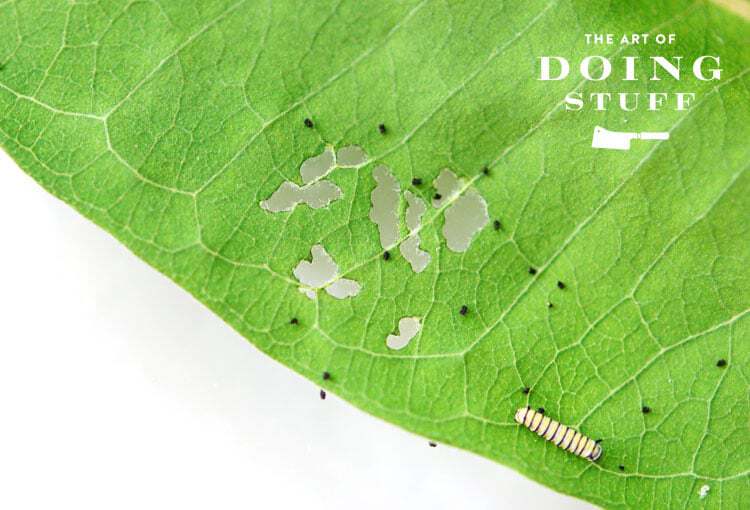
That's why when a little patch of milkweed showed up on my front lawn 20 years ago I left it there. The first year I saw only one Monarch butterfly head towards it the entire summer. It laid its eggs and I was stunned. A day later when I went to check on the eggs they were gone. Eaten by another bug or bird or perhaps a sandal wearing hippie strolling past looking for a healthful snack.
Regardless, the eggs were gone and I was angry. That fall I did a lot of reading up on Monarchs and their steady decline to near extinction. By the next summer I was prepared and began raising Monarchs inside my house by protecting their eggs and caterpillars.
If you haven't read my series on raising Monarchs it's FASCINATING in a Steven King meets Mother Nature kind of way. You can read the first post on raising Monarchs here.
2. Pollination Philanthropation
Plant some flowers just for the monarchs. Don't forget you can plant any of these flowers in pots. In fact ...
I'm giving away Sarah Raven's A Year Full of Pots next week courtesy of the book publisher.
I just got the book myself and there are a ton of potted flower ideas.
Would you like to save this stuff?
For the Monarchs some good choices are:
- Zinnia
- Verbena
- Asters
- Cosmos
- Marigolds
3. Butterfly Benefactor
Make your yard an official monarch waystation.
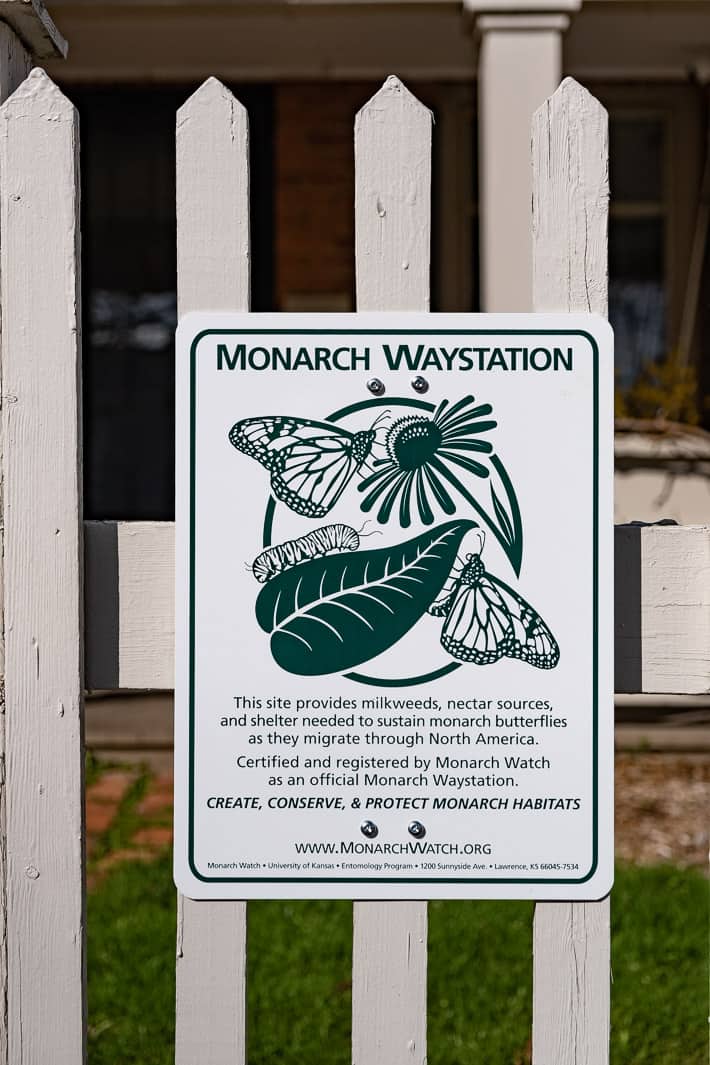
Monarch Watch is a non profit program that started at the University of Kansas in 1992. Its sole reason for being is to research monarchs, promote their protection across North America and educate people about it all.
If you're worried that milkweed won't fit into your neighbourhood's clipped lawn and trimmed boxwood aesthetic, you can order one of their signs for $17 U.S. The sign pretty much says you're basically saving the world from impending doom one fluttering bug at a time.
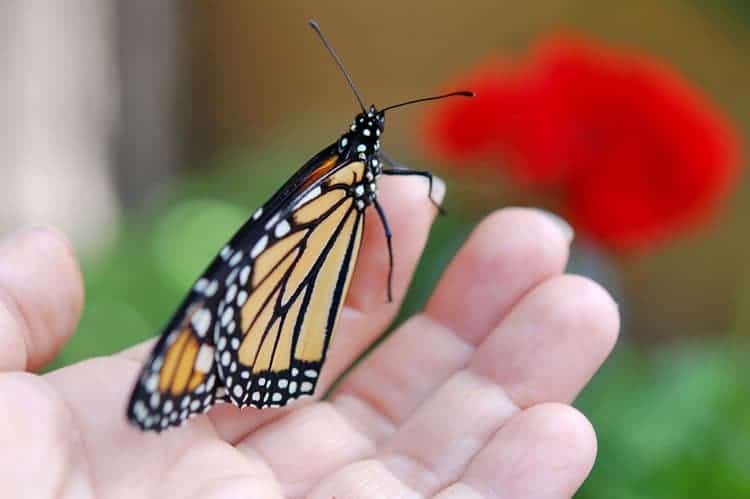
Monarchs have 4 generations each year. The first 3 generations are short-lived, only lasting 2-6 weeks in this world. They spend that time hanging out, eating nectar, being fabulous and laying eggs. But the last generation? The 4th generation of Monarchs? They're the special ones. These 4th generation Monarchs are the ones that guarantee the survival of the species - the migrators. They are born with a very specific job; to live over 6 times as long as their predecessors so they can fly almost 5,000 kilometres (3,000 miles) to to warm land of Mexico so their journey can begin all over again. Like salmon swimming upstream to spawn before they die.
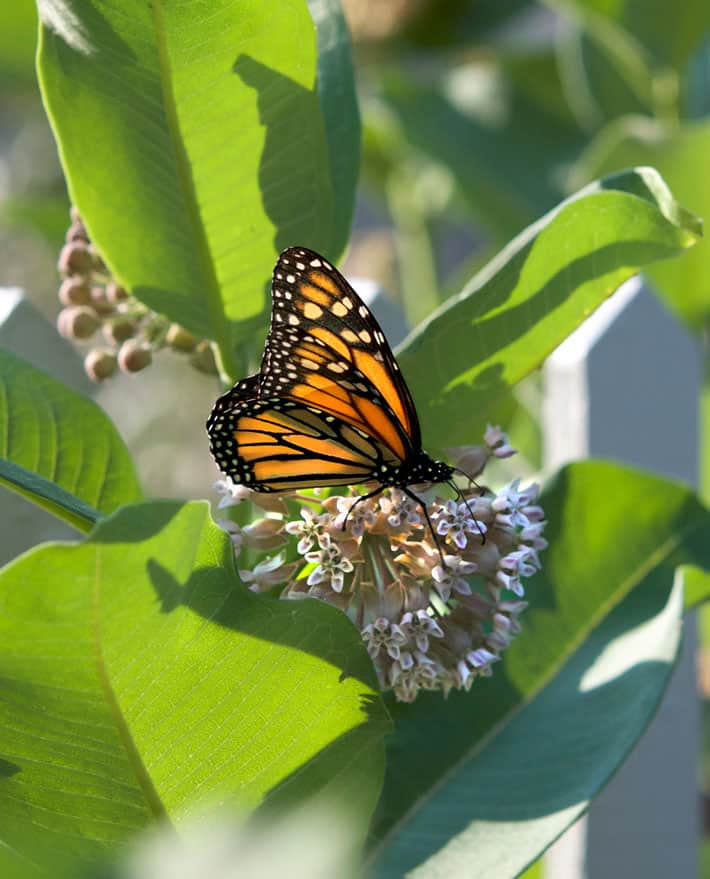
Another part of the Monarch Watch program is tagging the Monarchs you raise. Monarch Watch will mail you butterfly tags (which are little stickers you attach to your newly raised Monarch.) The tags only go on the migration Monarchs and allow Monarch Watch to keep track of the migration patterns and population of the Monarchs.

If you're interested, you can get all the information you need about ordering a sign or tags from The Monarch Watch site.
4. Instar Investor
If you really want to help you can do what I've been doing for years. It takes more time than planting flowers or leaving one milkweed stalk but it's a lot more fascinating.
You can learn to find and harvest monarch eggs and raise then raise them yourself to make sure they make it to adulthood. Then you release them.
You get to see up close every different phase of the development. All 5 instars, the chrysalis with its gold beads, and the crumpled pile of black and orange that opens up into a monarch butterfly.
I used to raise my monarchs indoors, then I started raising them outdoors in this monarch house I made. I've found the monarchs I raised indoors had less disease and a lower mortality rate so I'm going back to that method this year.
Conclusion
To help the pollinators: you can plant some flowers & watch the monarchs or you can leave rotting food on your lawn and wait for the flies. Your choice.
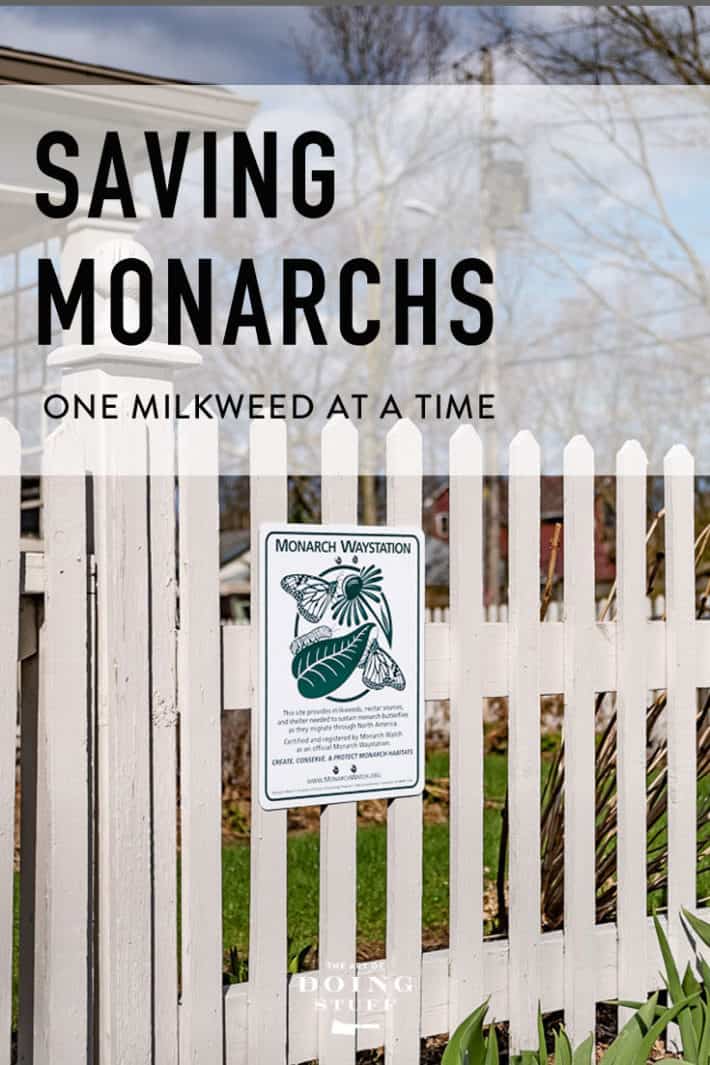

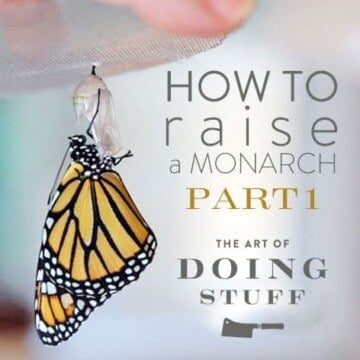
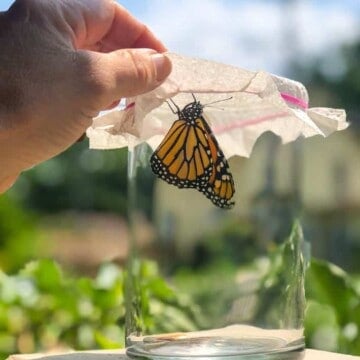
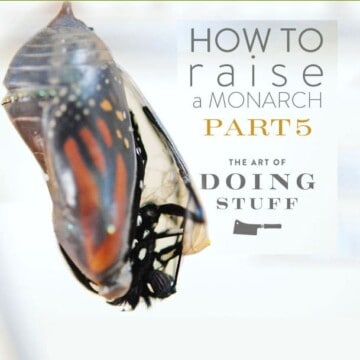
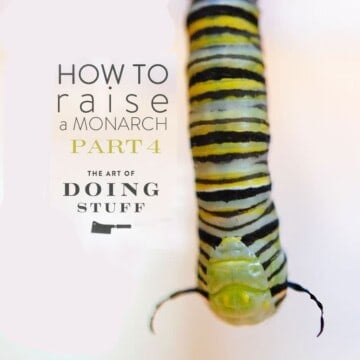
Teresa
Thank you!
I ordered tags. We raised about 50 monarchs last year and it would be nice to know if they made it to Mexico.
We also got these collapsible habitats to raise them - very handy!
https://monarchbutterflygarden.net/monarch-butterfly-kit/
Barbara Judisch
I did some research on this and learned that in SW Florida, some Monarchs do not migrate. It’s warm enough year-round that they stay put! A number of us in my neighborhood planted native milkweed last summer and we have enjoyed our butterflies all winter.
Angela Martin-Newman
We raised monarchs when we were kids, and three years ago when we moved back to Texas, I got to show my daughters how to find monarch eggs and then raise them. We currently have five caterpillars and one egg. All about to turn in the next few days to a chrysalis. I had no idea there were ways to tag them and keep track. Thank you for this.
Vikki
It's amazing how brave these tiny things are. We can't grow milkweed because of the salty ocean air, but we did build a bee house for Mason bees. These are the big ol' non-stinging bees that just bumble around pollinating--they are kind of the moo cows of the bee world. You can buy the Mason bee houses ready to hang on lots of websites (I like Etsy) or make your own. It's easy. I'm proud of you for helping the Monarchs.
SuzNKton
Your passion reminds me of when I get started about honeybees!
Susan MacMillan
Awesome thread about raising butterflies. My milkweed seeds did not germinate last year so I read about cold stratification(seeds I’ve wrapped in a moist paper towel then in a plastic bag in the fridge for 30 days.) Fingers crossed but a backup plan is to buy plants at a native plant nursery. Please don’t take plants from the roadsides. Keep our nurseries employed.
Susan
Jerry Dlubala
We decided to plant more local origination plants in our yard, and one of them was Missouri milkweed. It was a totally different plant than what we grew up calling "milkweed", which was an invasive stinky weed mainly used to chase other kids around and smear it on them, hehe. But last year, we had our first monarchs hatch off of that milkweed plant, and we found ourselves intrigued by the whole process. It was the best reality show I've ever watched, and hope for more this year. We even reattached a chrysalis to the plant using thread, that had somehow gotten attached to my bbq grill. Very cool, and amazing to witness the transformation.
Ashley
You got me hooked on this! So far, I have milkweed growing from seeds, and also found larger, milkweed plants at the nursery. I planted the milkweed along with other flowers that attract butterflies. Hoping to have a real nice butterfly garden this summer!!
Jen Mullen
The plant may be unattractive, but the milkweed flowers are beautiful! I need to know more about tagging--thanks for the link!
Nicole
I’m so doing this! I’ve been letting milkweed grow in my garden and last year, with your amazing advice, I raised my first butterfly. It was an amazing experience and I intend to try it again this year. Now if we could only help the bees.
Maggie Corner
Monarchs are beautiful and it is very rewarding to raise them or see them flourish in our gardens. I know this is off topic but it is the pollinators that we must take of, the myriad types of bees, wasps and other not so pretty insects, because without them we really are screwed. Leave the wildflowers in the ditches, don’t pull all those dandelions and don’t kill the garden bugs, they are often necessary participants in the garden food chain.
Jeanne Boardman
We live in Minneapolis ares and my husband has let the milkweed grow in our yard, along side our house. The first year he did this, he showed the next door neighbor’s kids how to raise monarchs. Well Little Sophie has gone on to be a monarch raiser extraordinaire! Last summer she came over to show us her log and the tags she was using to tag her monarchs. At that point she had raise over 50! It was amazing to see.
Joyce Forbush
Wow, timely, we have two pieces of an old stacked stone foundation in our pasture. I wanted to highlight it with plantings and decided upon milkweed. I know where the stuff grew last year so I’ll move some out there.
Joyce
Lucia Rostirolla
I've been raising monarch butterflies for the past two summers. Our local horticultural society had a guest speaker, Carol Pasternak, speak to our members. I was hooked, along with some other very enthusiastic club members, too. The first year, I raised and released 4 monarchs. Last year, I raised and released 31. It is such a rewarding experience.
Karen
31! That's impressive. And quite a lot of work. Good for you! ~ karen
Ann Roberts
I decided a few years back to collect milkweeds of all varieties possible. I think I am up to 3 that have taken and are doing well. Plus several wild varieties in near by fields. I hate that those do get mowed down twice a year but farmer's do have to do what they have to do.
The wild common butterfly weed variety actually does OK being mowed down and they don't mow it down to the absolute ground. So the butterflies do still have the leaves to eat even if they are not in bloom. We actually end up with 2 blooming periods due to the mowing.
I know they say that the Monarchs only eat milkweed, but here in TN I see Monarchs all over my zinnias as well, sipping the nectar along with the many other butterflies that love zinnias. And yes, I do know how to ID them correctly, LOL
Karen
The monarch butterflies will eat any flower nectar. It's the Monarch caterpillars that only eat milkweed leaves. Once they turn into butterflies they go for any floral nectar. :) ~ karen!
Lyanne Hoefer
I have planted lots of the common milkweed on my 5 acres here in Ontario, without Monarchs visiting them. I went to Florida this spring and my gf had a different milkweed full of caterpillars. We can reliably grow these annual from seed that look like pretty orange flowers! not tall weeds...so maybe more people will grow these in their city gardens.
Plant is called Butterfly Weed-Asclepias
Sabina
None of my locally sources milkweed seeds germinated this year, very sad, I plan on dedicating a plot at the beach house for monarchs. I do get a lot in my suburban garden. I have no milkweed there but lots of other pretty landing spots for them 😁
TucsonPatty
Karen - I never knew you could tag a butterfly That is flipping awesome. I had to go to the site and look around a little bit to figure out the how to and wherefore. I was curious how in the world you would do that. I grew up in western Kansas with tons of milkweed which was considered a noxious weed around the wheat fields. I’m sorry they felt that way. We had to hoe it and clean it out of the wheat fields, and I’m sorry now.
My neighborhood has recently had a push for Monarch garden spaces. I’m going to forward this post to the neighborhood listserve. Once again, thank you for all you do for us, Karen.
Martina
Butterfly tags?! I had to check that it wasn’t April fools...now I need to research butterfly tags...:)
Micki J G'Fellers
Several years ago, here in North East Tennessee, I stopped along side the road and pulled up a milkweed, roots and all. I took that thing home and planted the root. It grew the next year and has been spreading. My back flower bed is just milkweed. I watch my Monarch babies from start to finish. It's so sad when the "kids' leave home. They even spin their chrysalis on the soffit/overhang of my house. They are so beautiful. I am just in awe of GOD'S handy work.
Sarah McDonnell
You're in NE TN, Micki? I'm in Mid East TN! So we have heretofore only gone to Cades Cove to tag Monarchs. (Once, during a pop-up storm, we gathered all the "dead" Monarchs into the van for later study and burial. Except when they dried out there was a riot of kids, dogs, and butterflies all trying to get out!)
OK, this is the year we stop mowing the backyard and go au natural!
Paula
I am going to order one of those signs! I raised 5 Monarchs last summer...thanks to you!